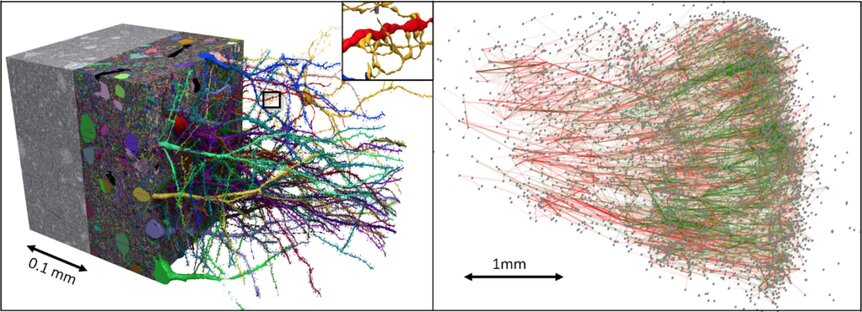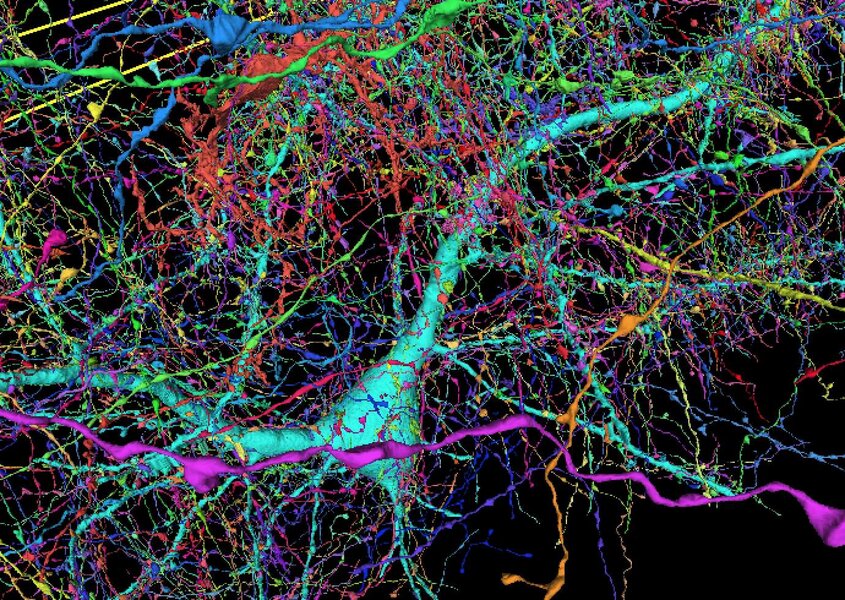Create a free profile to get unlimited access to exclusive videos, sweepstakes, and more!
Google and Harvard scientists create 3D map of the human brain using 225 million images

Demonstrating just how extraordinary of an organ the human brain is, a team of scientists with Google and Harvard University has just conjured up an amazing color-coded map of nearly 4,000 incoming axons connecting to a single neuron.
This stunning browsable 3D map which represents just one millionth of the cerebral cortex has been composed using 225 million separate images and a super computer-crunching 1.4 petabytes of data. The main goals of this project were to produce a novel resource for studying human brains and to improve and scale the underlying connectomics technologies.
Mapping the convoluted clutter of neurons, synapses and neurological cells is a formidable task at best, but these diligent engineers achieved admirable results with this ambitious grey-matter project to create some sort of human brain wiring diagram ("connectome") based on its 86 billion neurons linked via 100 trillion synapses.
Back in January 2020, Google released the fly “hemibrain” connectome, an online database delivering the morphological structure and synaptic connectivity of approximately half of a fruit fly brain. This detailed database and its visualization tools has totally altered the way that neural circuits and pathways are understood in the fly brain.
Now in a huge advancement, Google and the Lichtman Lab at Harvard University has presented a mind-boggling model of a micro section of the human brain, which began with a microscopic sample obtained from the temporal lobe of a human cerebral cortex. This slice was stained for added visual clarity, then coated in resin to protect and preserve it.
The surgical sample was then diced into roughly 5,300 slices each around 30 nanometers (nm) thick. A scanning electron microscope was employed next to image the sample, with a maximum resolution registering down to 4 nm. This all resulted in the creation of 225 million two-dimensional images that could be stitched together to manifest a single 3D volume.
Machine learning algorithms carefully scanned the slice to identify the different cells and their underlying structures. Following a few passes by various automated systems, human eyes provided a visual edit pass for some cells to determine whether or not the algorithms were identifying them correctly.
Google has named this result the H01 dataset, and it's considered to be perhaps the most comprehensive maps of the human brain in existence. Containing 50,000 cells and 130 million synapses, in addition to tinier cellular segments like axons, dendrites, myelin, and cilia, this startling rendering was born only by utilizing over a million gigabytes of data.
But the insane element to this advancement is that Google labels this miniature sample as just one millionth of the volume of the entire human brain.
As the Lichtman Lab team scales this behemoth brain map even further in the future, the whole H01 dataset is available online for researchers and scholars to investigate, with a preprint paper showing the work available on bioRxiv.
















